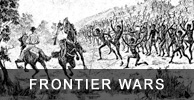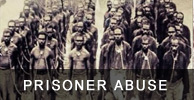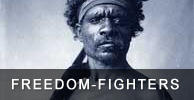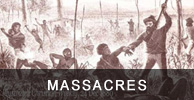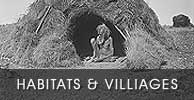Why the number of deaths in the Frontier Wars do matter
Australia should be poised for a new debate about its bloody colonial genesis and the near eradication of one of the world's oldest peoples
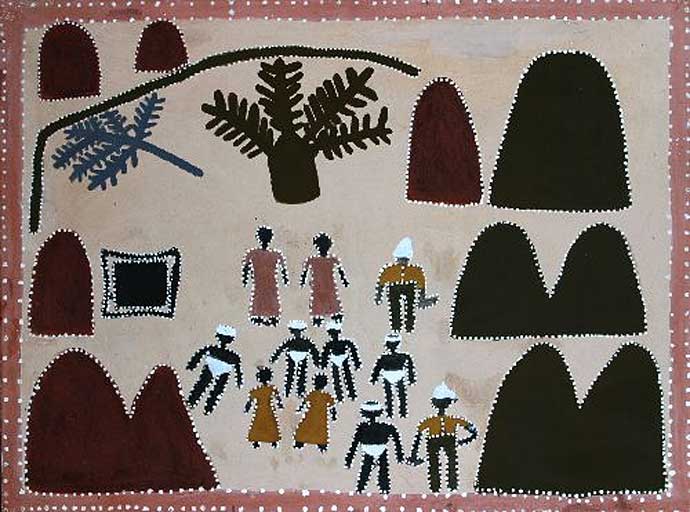
The Mistake Creek Massacre, a painting at the crux of Australia's culture wars.
Queenie McKenzie Nakarra (1930 - 1998) - Natural earth pigments on canvas
Photograph: Queenie Mckenzie estate
Paul Daley theguardian.com 15 July 2014
Precisely how many Indigenous Australians died in the frontier wars that raged across the continent after European occupation in 1788?
When writing about the issue, I have consistently used the figure of *20,000 Indigenous Australians and about 2,000 colonial soldiers, police and settlers. I've said this a conservative estimate, based largely on the academic research of Henry Reynolds, John Connor and others.
That figure - translating to about 10 Indigenous deaths for each European killed - has been hotly contested by conservative historians, but new collaborative academic research credibly suggests that the real frontier war fatality figure could be at least three times greater, and that the ratio of black to white deaths could be 44 to one.
We will never know for certain. The documentation needed to determine an exact figure - be it 100,000, 60,000, 20,000 or, as many conservative historians insist, far fewer - either never existed or has been destroyed, wilfully or accidentally.
Certainly the stories of massacres of Indigenous Australians are everywhere in the archives of the major cultural institutions of Australia and Great Britain. The diaries, letters, journals and memoirs of colonial and postcolonial officials, troops, police, farmers, frontiersmen and women are replete with accounts of fights against - and massacres of - the "marauding blacks".
Early newspapers also offer remarkably detailed concurrent and retrospective accounts of frontier violence. Such stories are so often defined by a chilling, deeply disturbing candour, so detached are the killers from the humanity of their victims. But read, as I have, enough of them (such as the reminiscences of Korah Halcomb Wills) and you'll be impressed with an overwhelming sense that the orchestrated violence was very widespread, well-orchestrated and committed continent-wide from occupation until far into the 20th century.
There is another rich source that supports the colonial and postcolonial white evidence. It is a source that the deniers have long rejected and sought to discredit; the rich oral histories in Indigenous communities of the massacres that reverberate as ongoing trauma through the generations.
Many of the stories have transmuted into songs and visual artwork, such as the controversial painting Mistake Creek Massacre (depicting the murder of eight Indigenous men, women and children in 1915), by the Kimberley artist Queenie McKenzie.
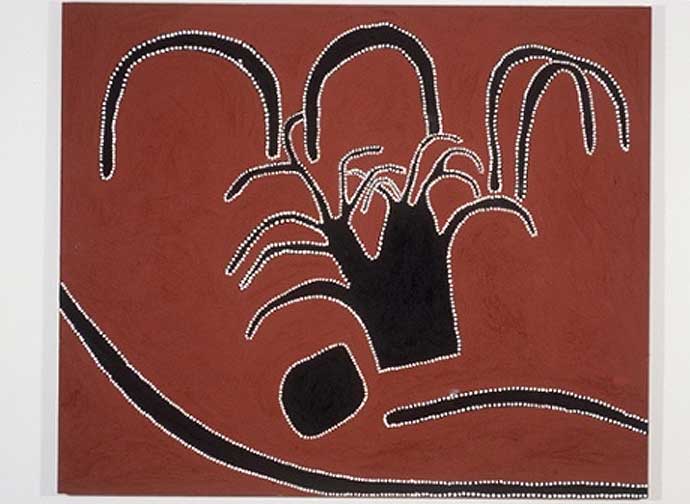
Blood on the Spinifex, by Timmy Timms. The Mistake Creek Massacre; ochres on linen.
When considering the cultural resonance of frontier war it helps to remember that the last widely-accepted massacre, at Coniston in the Northern Territory in 1928, is considerably closer to the living memory of the communities it affected than the invasion of Gallipoli in 1915 - the first act in a war that would kill about 62,000 Australians and, contestably, define the nationhood of the new federation (incidentally, one of the main perpetrators of the Coniston Massacre was a Gallipoli veteran, George Murray, who would later boast in an interview about killing territorial Aboriginals.)
There is no denying the profound social, political and cultural impact of Australia's world war one losses. From a population of about five million more than 416,000 men enlisted, some 62,000 died, another 155,000 were wounded. The hole was vast and profound.
But is it relevant when discussing the number of Indigenous Australians killed in frontier war?
Yes. Two historians, Raymond Evans and Robert Ørsted-Jensen, have concluded that in Queensland alone - the epicentre of frontier war in the mid-19th century Australia - at least 65,180 Aboriginal Australians were killed from the 1820s until the early 1900s.
Considering that their research focuses on Queensland alone, their findings are freighted with a disturbing implication about the number of Indigenous Australians killed continent-wide. Australian deaths in world war one would pale in comparison.
If Evans and Ørsted-Jensen are to be taken seriously (and, on the basis of a paper they delivered at a conference in Queensland last week, their research deserves to be pored over and discussed widely) then Australia should be poised for a new debate about its bloody colonial genesis and the near eradication of one of the world's oldest peoples.
Evans is a respected historian who has been researching Australian frontier violence since the 1960s, and Ørsted-Jensen a Danish master of social science and doctoral candidate at the University of Queensland. They have scoured the remaining records of the Queensland Native Police Force and studied the prevalence of "black police" barracks across the colony's frontier from 1859 to 1898 to determine the approximate number of patrols, contacts and killings based on reported body counts. Their paper, Assessing Violent Mortality on the Queensland Frontier, reads:
We arrive at the total of 41, 040 Aborigines killed during 3,420 official frontier dispersals across almost 40 years of conflict. This mortality figure is a statistical projection, produced by cautiously sampling fragmentary evidence from the long project of land dispossession. It is not and can never be a precisely accurate figure. That number will never be known.
Let us be clear about what we are claiming here. The 41,000 death rate does not represent the full quotient of killings. It is merely a Native Police statistic that does not cover official dispersal activities across the prior decade of 1849-59. These may have accounted for another 3,000-4,000 deaths.
Neither does their figure include vigilante actions against Indigenous people by settlers and raiding parties. Based on a sample of 644 frontier clashes, Ørsted-Jensen found 57% involved Native Police and the remaining 43% settlers.
Given there were 3,420 official dispersals across 40 years, the historians argue "the settlers' 43% must approximate to another 2,580 attacks". "Together, our totals for settlers and Native Police amount to no less than 61,680 in 6,000 attacks," they conclude. Evans and Ørsted-Jensen add "an estimated minimum of 3,500 kills associated with Native Police activity and 1,500 European deaths to "arrive at an aggregate 66,800 killed" between the 1820s and early 1900s. They write:
We are aware that we have been incrementally conducting this research during a time when conscientious historians have been pilloried for even suggesting that a range of serious massacres once occurred in Australia. We are acutely sensitive to the wider denialist mood in some sectors of Australian society and its mainstream media. And so we proceed with caution and conservative assessment.
The frontier war, they say, was "our Great War - a war for both the defense and conquest of Australia".
In the countdown to the centenary of Anzac this proposition might pose troubling questions for those who view this country's contribution to world war one as an expression of uniquely Australian values. Such as: what did the other war say about the real genesis of Australian nationhood?

